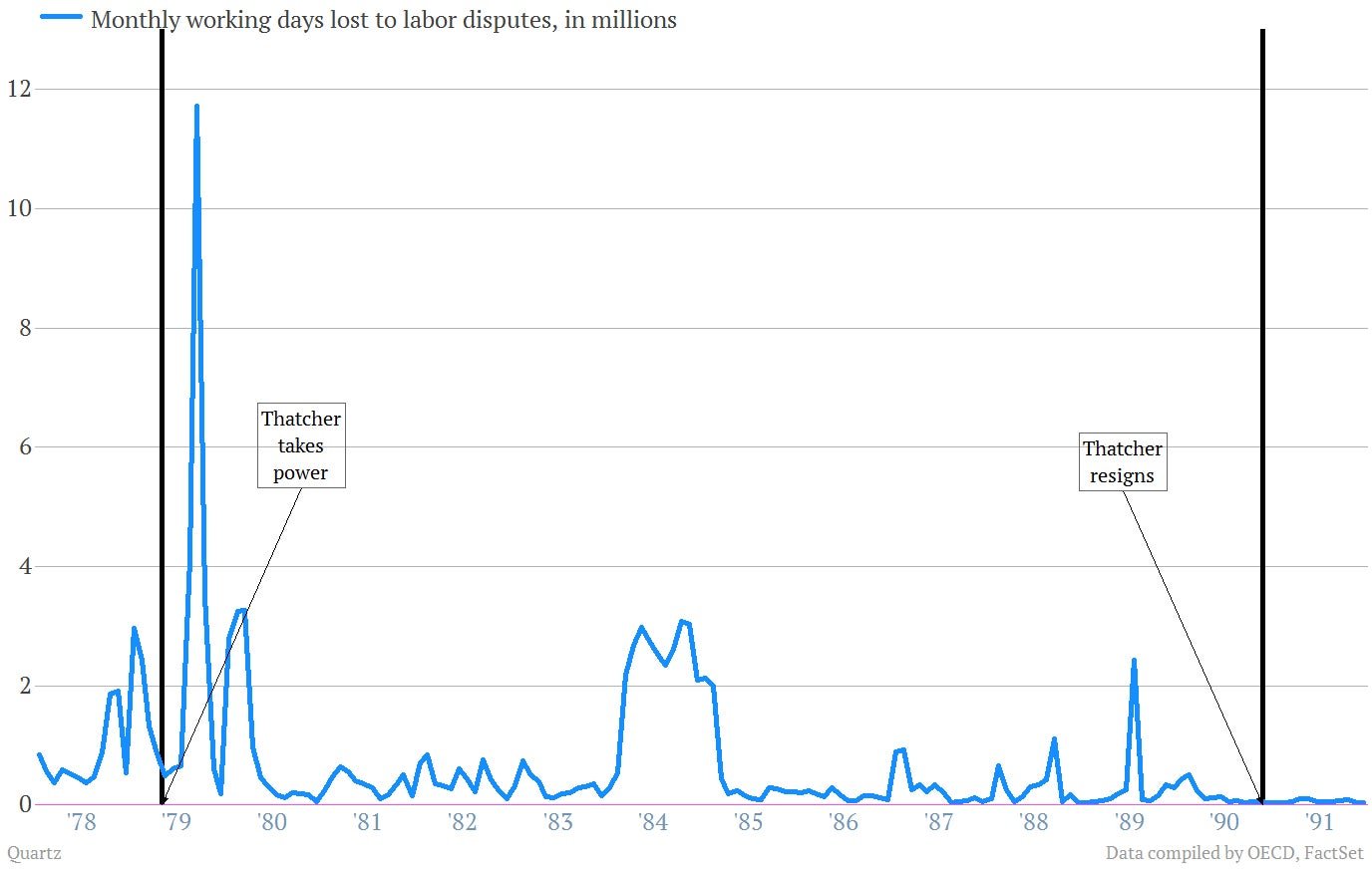The Thatcher era wasn’t an economic miracle, and these charts show why
Upon the death today of former British prime minister Margaret Thatcher, it’s worth taking a second look at the momentous economic changes Britain underwent when she held the reins of power.

Upon the death today of former British prime minister Margaret Thatcher, it’s worth taking a second look at the momentous economic changes Britain underwent when she held the reins of power.
When Thatcher took power the British economy was clearly struggling.
And it continued to struggle after her leadership began on May 4, 1979, until it turned around conclusively by around 1983. Still, even at the peak of the Thatcher era, Britain’s economic growth wasn’t going gangbusters. It only topped a 2% annualized pace during one quarter in the late 1980s. (On the other hand, by the relatively slow-growth standards of Britain, that remains the recent high-water mark.)
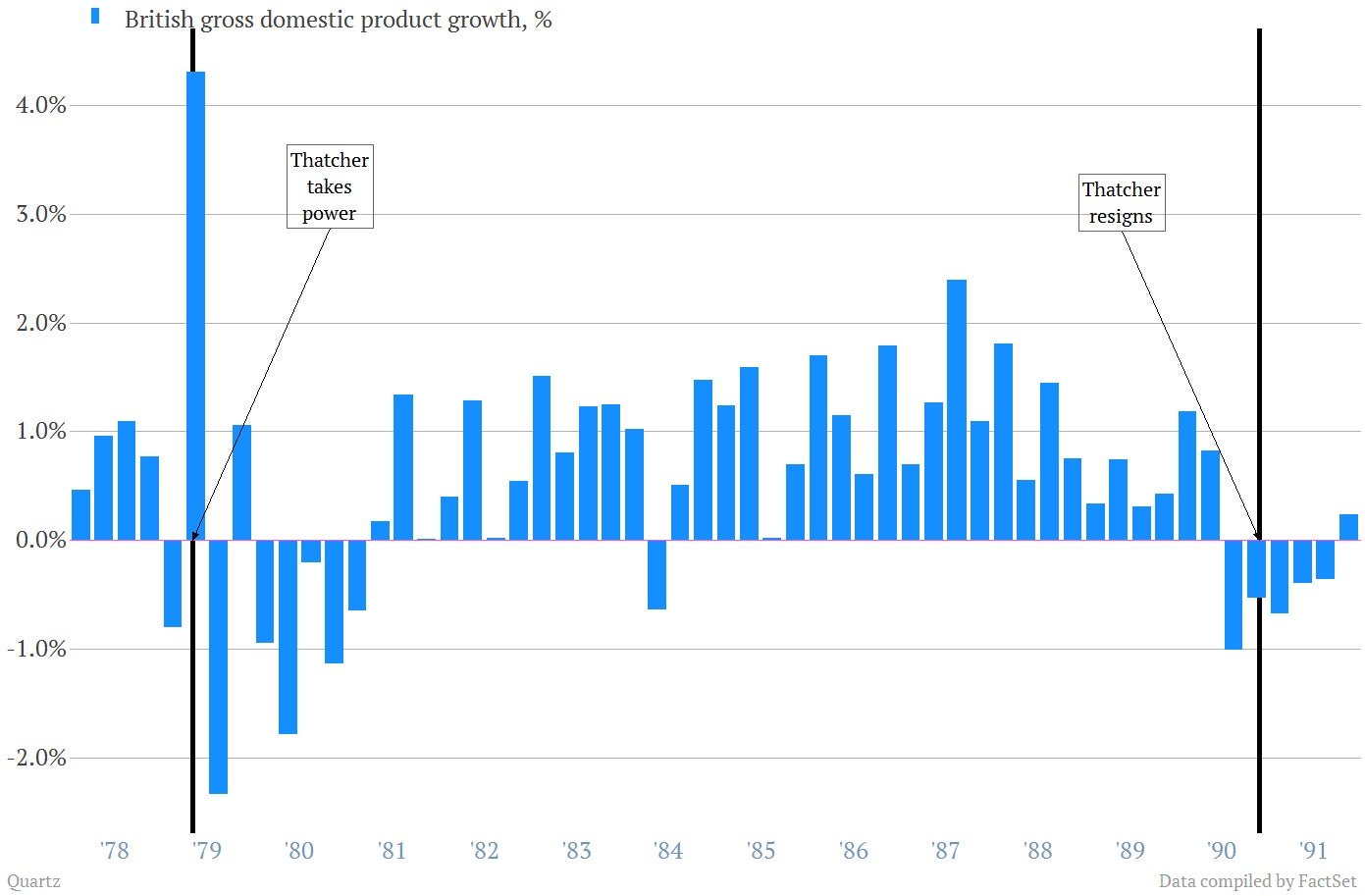
Meanwhile, unemployment was exploding.
Here’s a look at the British jobless rate. For the record, it took nine years after her departure for the unemployment rate to decline down to the sub-6% neighborhood that prevailed before Thatcher took power.
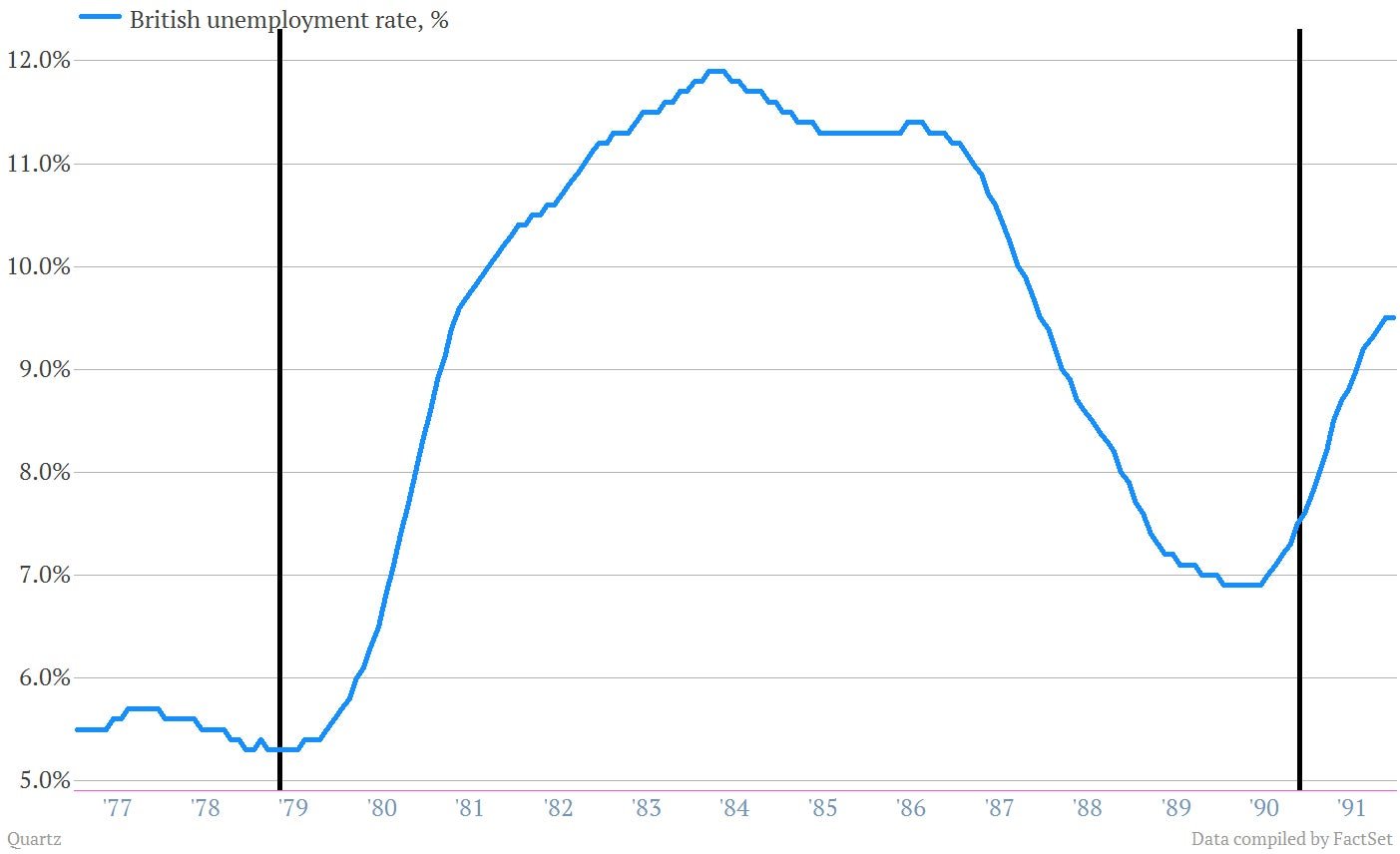
For a bit of perspective, here’s a look at the number of unemployed people over a much longer time frame. The Thatcher era is between the black lines.
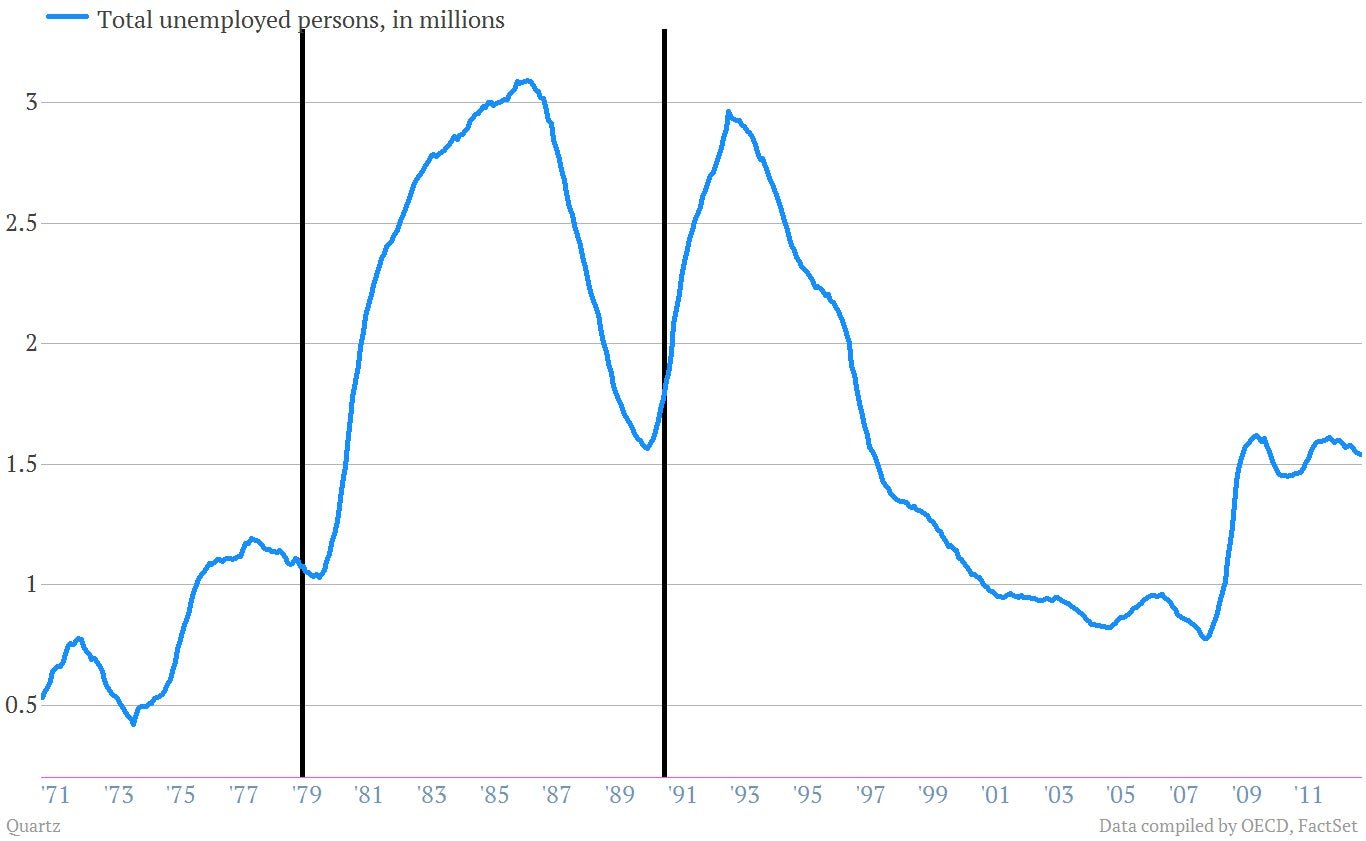
Inflation did fall…
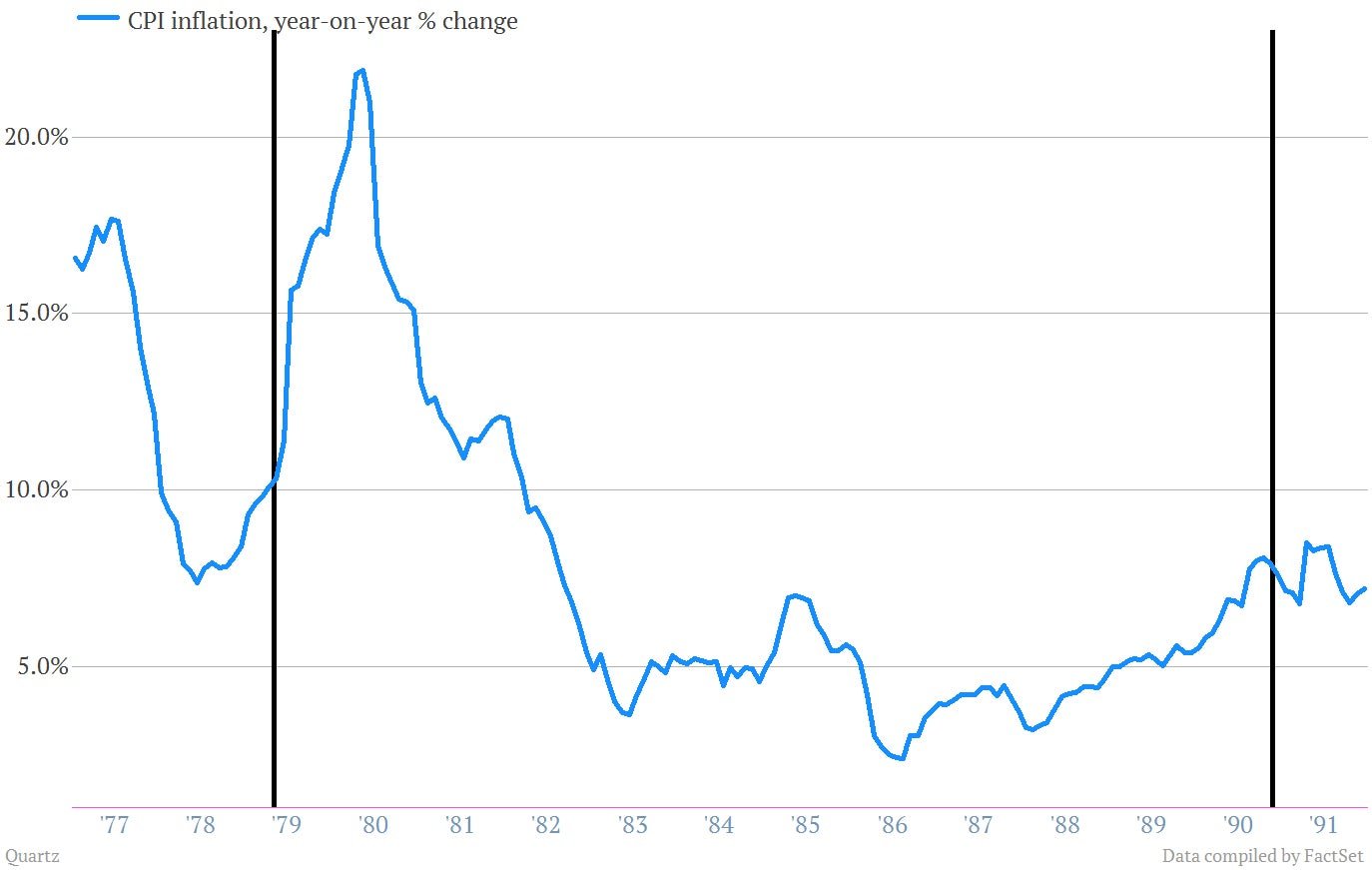
…at least partly because government spending declined, as a share of GDP.
The spending drop likely played an important part in keeping inflation in check, along with tighter global monetary policy.
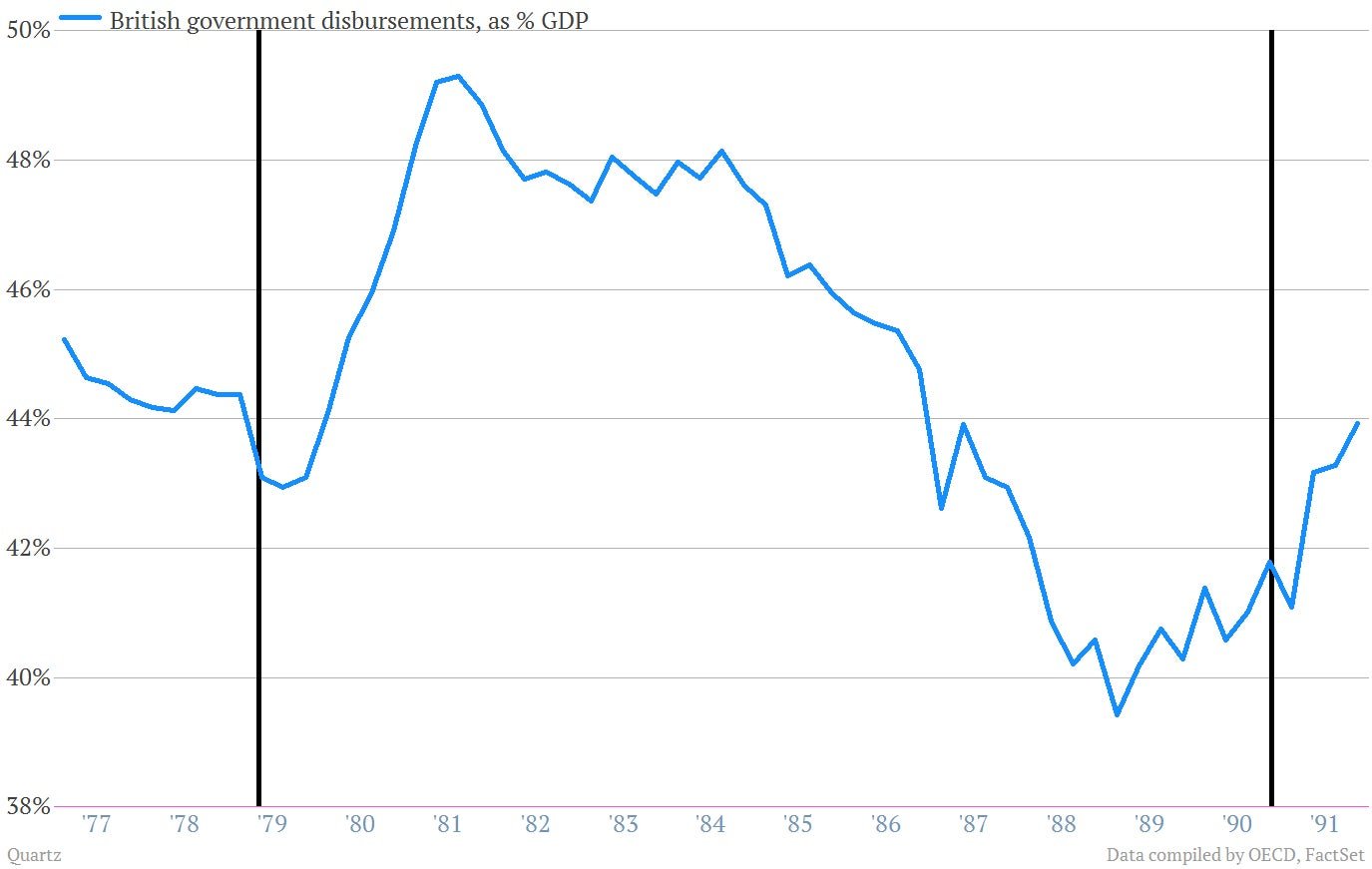
She tamed Britain’s once-fierce trade unions.
While the strikes were widespread in her early days of power, it was collapse of the miners’ strike of 1984-85 that ultimately settled the issue.
